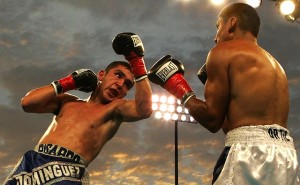- Calls to this hotline are currently being directed to Within Health or Eating Disorder Solutions
- Representatives are standing by 24/7 to help answer your questions
- All calls are confidential and HIPAA compliant
- There is no obligation or cost to call
- Eating Disorder Hope does not receive any commissions or fees dependent upon which provider you select
- Additional treatment providers are located on our directory or samhsa.gov
The Dark Side of Horse Racing: Weight Control in Jockeys
Contributor: By Amelia Davis, MD, Medical Director and Chief, Adult Psychiatry and Inpatient Eating Disorders Unit Rosewood Centers for Eating Disorders®

Some of the unhealthy behaviors include self-induced vomiting, abusing laxatives and diuretics to lose water weight, using saunas and hot baths, skipping meals or avoiding food, and taking diet pills. While many might associate these behaviors with adolescent girls and/or young women involved in high-end fashion, it’s striking to think that male jockeys may struggle with eating disorders as they try to meet the strict weight requirements for racing.
The Strict Requirements for Jockeys
The weight requirements for horse jockeys tend to range from 112 lbs. to 126 lbs. (the weight requirement is 126 lbs. for the Kentucky Derby). This includes about 7 lbs. of gear, so that an adult male must weigh less than 119 lbs. in order to participate in the Kentucky Derby. There is no height requirement, however, jockeys tend to be shorter due to this weight requirement.
In order to meet weight requirements, many jockeys engage in a number of different eating behaviors. Researchers Mezey and King administered the Eating Attitudes Test, a screening tool that assesses individuals for abnormal eating behaviors and attitudes. Their results showed that male jockeys scored significantly higher compared with males in other studies and the majority interviewed reported food avoidance, the use of saunas, and the abuse of laxatives.
Another study in Victoria, Australia, in which jockeys completed an anonymous questionnaire, with 75 percent reporting routinely skipping meals and 81 percent restricted food intake in the 24 hours prior to racing. Sauna-induced sweating was used 29 percent of respondents and diuretics by 22 percent to aide in weight loss prior to racing.
The Stigma of Having an Eating Disorder

However, we do know that engaging in these extreme eating behaviors places one at risk of developing an eating disorder, becoming clinically depressed and developing a serious health condition. What’s more, some of the many serious health effects associated with eating disorder behaviors include:
- Tooth decay (from engaging in vomiting)
- Osteoporosis
- Heart arrhythmia
- Gastrointestinal damage
- Electrolyte abnormalities
- Kidney failure
The Increased Risk of Serious Injury
In addition, horseracing is fraught with many injuries, the most common cause of injury is the jockey falling or being thrown from the saddle, then the horse landing on top of the jockey. Imagine being weak from restrictive eating habits and/or engaging in vomiting or other purging behavior and then riding a 1,200 lb. animal at 35 mph!
Horseracing is very dangerous, and meeting weight requirements can add extra pressure and eating disorder behaviors can weaken an individual, placing him or her at heightened risk.
Other Sports that Promote Risky Eating Behaviors

Dancing, swimming, and running don’t have “weigh ins” or specific weight cut-offs, but since low body fat is advantageous, participants in these activities are vulnerable for developing an eating disorder. Males with eating disorders are in danger of going undiagnosed and untreated because eating disorders are less prominent in male athletes compared with female athletes.
Identifying the Signs and Symptoms of an Eating Disorder
It’s important to identify someone who is engaging in eating disorder behavior, even if one might think it’s mild. With help and treatment, a person can potentially avoid serious health implications associated with eating disorders.
Signs that you or a loved one might have an eating disorder include
- Skipping meals
- Going to the bathroom following meals
- Excessive or obsessive exercise
- Obsessing about one’s weight
- Strict eating habits or rituals
Although these behaviors are not diagnostic of an eating disorder, they may suggest that something more serious is going on and may warrant further evaluation by an eating disorders treatment professional.
If you or a loved one is struggling with an eating disorder, please get help. Through treatment and counseling, eating disorders can be successfully treated.
About The Rosewood Centers for Eating Disorders®
Innovative therapies, an internationally respected multidisciplinary team, superb aftercare, alumni support, family involvement and collaboration with professional referents are just a few reasons people choose Rosewood for eating disorder recovery.
A fully accredited and licensed hospital located in the beautiful Arizona desert, Rosewood is one of the first and most experienced programs to provide comprehensive care for all stages of recovery from anorexia, bulimia, binge eating disorder, co-occurring addictions and mood/psychiatric disorders. At Rosewood, men, women, and adolescent boys and girls receive clinically superior treatment while immersed in the comfortable homelike environment of our stunning 13-acre campus. Visit www.rosewoodranch.com for more information.
References:
- Baum, A. (2006, June). Eating disorders in the male athlete. Sports Medicine,36(1), 1-6.
- Hendricks, K., Downes, A., Gibbins, J., Casini, V., Page, E. (2009, April). An overview of safety and health for workers in the horse-racing industry. DHHS (NIOSH). Retrieved from http://www.cdc.gov/niosh/docs/2009-128/#Health
- King, M., Mezey, G. (1987, Feb). Eating behavior of male racing jockeys. Psychological Medicine, 17(1), 249-253.
- Moore, J., Timperio, A., Crawford, D., Burns, C., Cameron-Smith, D. (2002, Mar). Weight management and weight loss strategies of professional jockeys. International Journal of Sport Nutrition and Exercise Metabolism, 12(1), 1-13.
- Wilson, G., Drust, B., Morton, J., Close, G. (2014, June). Weight-making strategies in professional jockeys: implications for physical and mental health and well-being. Sports Medicine, 44(6), 785-796.
The opinions and views of our guest contributors are shared to provide a broad perspective of eating disorders. These are not necessarily the views of Eating Disorder Hope, but an effort to offer discussion of various issues by different concerned individuals.
Last Updated & Reviewed By: Jacquelyn Ekern, MS, LPC on April 28th, 2015
Published on EatingDisorderHope.com
